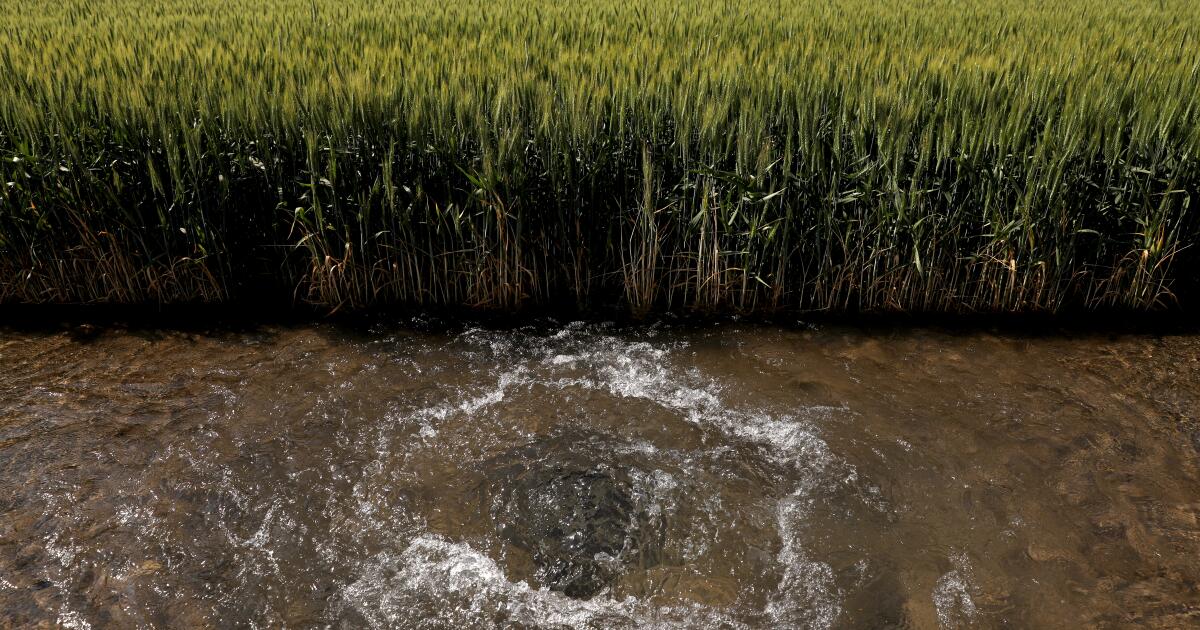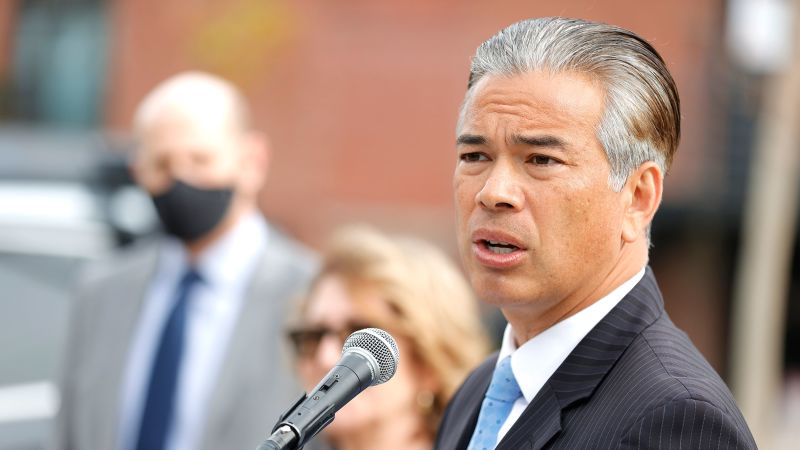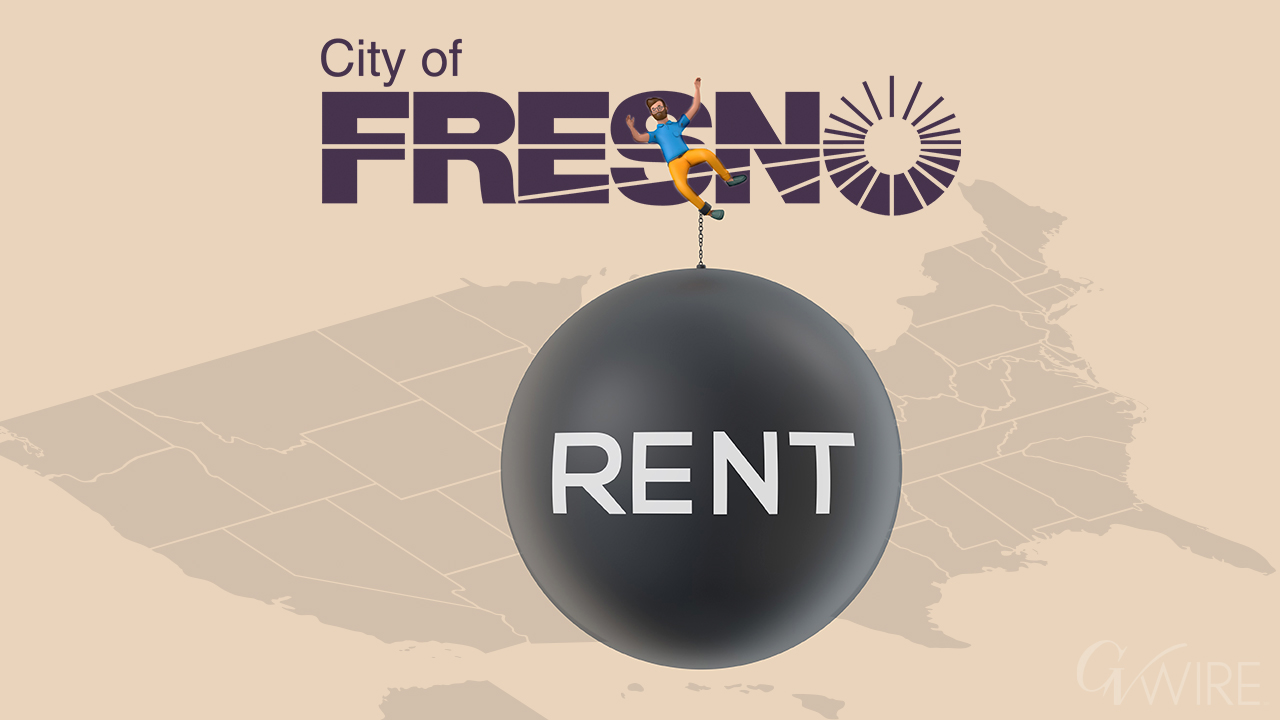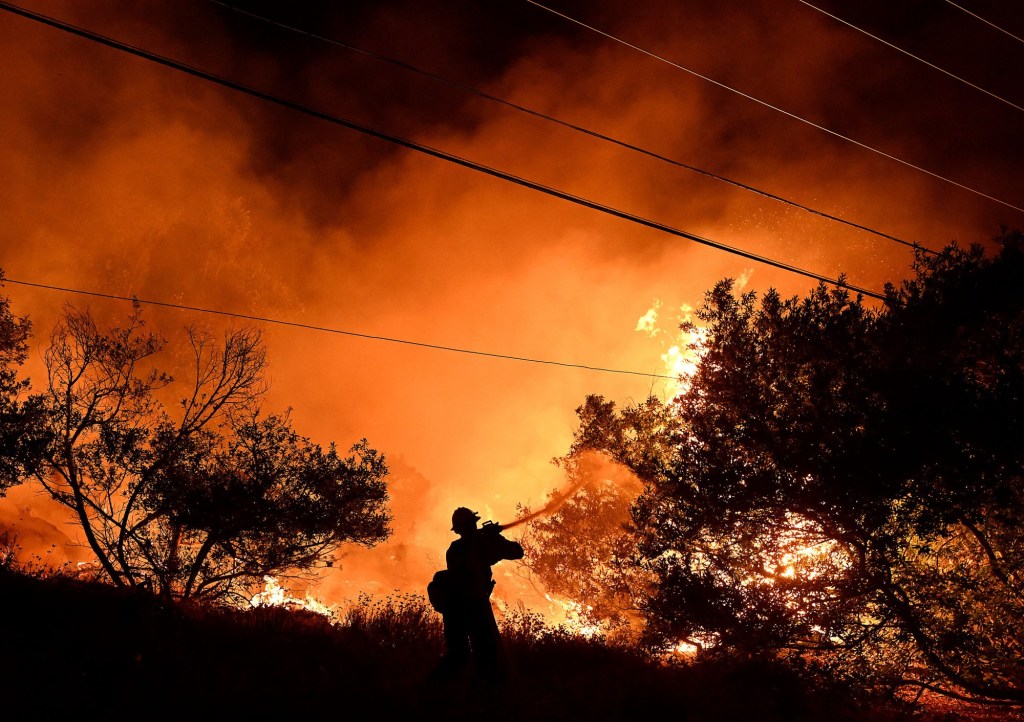California
A new California law allowing any person to sue for damages over election deepfakes has been put on pause after a federal judge granted a preliminary injunction Wednesday blocking it. ____ * [Original source: cbsnews.com](https://www.cbsnews.com/sanfrancisco/news/california-election-deepfake-law-ab2839-blocked-by-judge/)
>The goal of the bill. SB 707, is to reduce the millions of tons of unwanted clothing that typically end up in landfills across the state, support the development of upcycling and recycling across the state and address the environmental impacts of “fast fashion.” > >“SB 707 isn’t just about recycling; it’s about transforming the way we think about textile waste,” Senator Josh Newman (D-Fullerton), the bill’s author, said in a statement. “The framework created by SB 707 will create new opportunities for every Californian to participate in a more sustainable future.
 www.latimes.com
www.latimes.com
>[Assembly Bill 1775](https://leginfo.legislature.ca.gov/faces/billNavClient.xhtml?bill_id=202320240AB1775), which goes into effect Jan. 1, gives California cities the option of allowing dispensaries to prepare and serve hot food and nonalcoholic drinks on site, as well as host live performances such as concerts and comedy shows.
 www.bloomberg.com
www.bloomberg.com
[Stoves are a pretty big source of directly-inhaled NOx pollution](https://news.stanford.edu/stories/2024/05/people-with-gas-and-propane-stoves-breathe-more-unhealthy-nitrogen-dioxide) that is pretty much unregulated. Turning on the vent can help if it vents outside (many do not) but often not by enough to bring things down to a won't-give-kids-asthma level.
 jacobin.com
jacobin.com
cross-posted from: https://lemmy.world/post/20370943
 tiremeetsroad.com
tiremeetsroad.com
Via Reddit, except [the important context has been removed](https://old.reddit.com/r/PublicFreakout/comments/1fomak8/mama_cant_help_you_now/lorl33d/) in favor of [protecting the police](https://streamable.com/qxmpg7).
 www.c-win.org
www.c-win.org
70% of those almonds are exported. But you should take a pathetic dribble of a shower. For those who don’t know, the flow restriction plug can be removed from most shower heads. But you didn’t hear it from me.
 www.latimes.com
www.latimes.com
cross-posted from: https://slrpnk.net/post/13172174 > Archived copies of the article: > * [archive.today](https://archive.ph/cdO9H) > * [ghostarchive.org](https://ghostarchive.org/archive/utE7M) > * [web.archive.org](https://web.archive.org/web/20240909164528/https://www.latimes.com/environment/story/2024-09-09/hotter-drier-different-how-climate-change-will-alter-l-a)
A prominent portion of the Southern California coastline has been closed for more than 1,000 days because of sewage pollution flowing across the border from Mexico. Beaches on the Imperial Beach coastline, in the southern part of San Diego County, have been closed since Dec. 8, 2021, Assemblymember David Alvarez, who represents the Imperial Beach area, said in a news release. While occasional dirty-water warnings are common in California, a multiyear closure is certainly not. In the past five years, more than 100 billion gallons of contaminated sewage have flowed from the Tijuana River into the Pacific Ocean. The California Legislature recently passed a resolution calling for the federal government to declare a state of emergency for the ongoing sewage crisis. This isn’t even the first time Imperial Beach has had to deal with such contamination issues. According to Assembly Joint Resolution 12, the pollution has gone on for decades. The water quality along the Imperial Beach coastline has been linked to 34,000 annual illnesses, and approximately 76% of those illnesses are related to sewage pollution, the resolution said, citing research from the Scripps Institution of Oceanography. Assemblymembers said the contaminated waters have caused health problems, such as headaches, rashes, infections and breathing problems, for some in the area. The continuous flow of untreated sewage has also decreased tourism, hurt local business and lowered property values, according to the legislation. City officials in San Diego and Imperial Beach have declared a state of emergency several times over the years and are asking the United States Congress and President Joe Biden to provide more funding for the U.S. Environmental Protection Agency’s plan, which was implemented to address the crisis. Last month, federal officials approved a $600 million project that would fund the repairs and rehabilitation of the main wastewater treatment plant for the sewage. The sewage is supposed to be filtered through the South Bay International Wastewater Treatment Plant in San Diego County, which filters the water from Tijuana, Mexico, before it’s pumped into the Pacific Ocean. The repairs, though, on the nearly three-decade-old plant could take up to five years. In a letter addressed to Calif. Governor Gavin Newsom, Imperial Beach Mayor Paloma Aguirre said that timeline is “unacceptable.” Aguirre asked Newsom’s office to assist in proposing a solution to the sewage crisis and declarea state of emergency. “Imperial Beach and residents in south San Diego County are slowly being poisoned by this crisis, and our voices are not enough,” Aguirre said in a news release. “We need the state to stand with us and demand a comprehensive solution.” Sep 4, 2024 Photo of Madilynne Medina Madilynne Medina is a news reporter for SFGATE. Born and raised in the Bay Area, she earned a B.S. in journalism from San Jose State, where she served as executive editor for the Spartan Daily, and has also worked at NBC Bay Area. When she’s not out in the field reporting, she’s likely trying a new workout or listening to The Weeknd. You can contact her at madilynne.medina@sfgate.com.
 www.latimes.com
www.latimes.com
California cities, counties may need to consider wildlife connectivity in development plans A haggard and scruffy looking mountain lion. The famed and now deceased mountain lion known as P-22 developed mange after eating rat poison in 2014, and was captured and treated for the illness. One of two bills approved recently by the California lawmakers would place restrictions on the use of certain rat poisons. (National Park Service) California lawmakers have passed a pair of bills aimed at making the landscape safer for wildlife threatened by habitat fragmentation and ubiquitous rat poison. AB 1889, known as the Room to Roam Act, directs cities to consider and protect wildlife connectivity in their land-use plans. Meanwhile, AB 2552, dubbed the Poison-Free Wildlife Act, puts restrictions on certain types of rat poison, including removing them for over-the-counter purchase and limiting their use in wildlife areas. Subscribe to Continue Reading “Our wild neighbors should have the freedom to find food, mates and shelter, and should not be sickened or killed by reckless use of poisons, and so we owe it to ourselves and California wildlife to find ways to coexist,” said J.P. Rose, urban wildlands policy director at the Center for Biological Diversity, which sponsored both bills. The bills, which now go to the governor’s desk for final approval, were authored by Assemblymember Laura Friedman (D-Glendale). They cleared the state Legislature late last month and build on previous laws she spearheaded. Cars, lack of connectivity and poison are the top threats to imperiled mountain lions in Southern California’s Santa Monica Mountains. The late, famed cougar P-22 was struck by a car toward the end of his life a few blocks south of Griffith Park and a subsequent exam revealed an old injury that may have been caused by another collision. He was also exposed to rat poison and developed mange. Efforts to boost wildlife connectivity in the Golden State have gained momentum in recent years. What’s billed as the largest wildlife crossing in the world is rising over a 10-lane freeway near Los Angeles, while last month saw the launch of an initiative seeking to leverage public and private resources to build more safe passages for critters across the state. Aggressive and impactful reporting on climate change, the environment, health and science. Room to Roam arrived about two years after the passage of a law that directed the California Department of Transportation to explore wildlife connectivity when it builds or expands roadways. (As required by that law, Caltrans recently released its wildlife connectivity report.) The new bill “addresses the land-use side of the coin,” Rose said. Mari Galloway, California program director for the Wildlands Network, a co-sponsor of both connectivity bills, said there was concern that a local government might allow development in an area where Caltrans invested taxpayer money to make it passable for animals. The new bill aims to avoid that headache by fostering coordination among various agencies and requiring local leaders to consider how development affects the movement of wildlife and habitat connectivity. “The intention of the bill is to try to get everybody moving in the same direction in trying to identify where these landscapes need to remain permeable to ensure that we can continue to have this biodiversity,” Galloway said. Cities and counties decide where development goes through long-term planning documents, known as general plans. This bill would mandate that local leaders “identify where these wildlife connectivity areas are in their general plan and then avoid, minimize and mitigate impacts to that area to be a functional linkage for wildlife,” Galloway said. Proponents say wildlife movement isn’t currently considered until the end of the planning process — missing the opportunity to view the issue from a regional standpoint. “What this bill seeks to do is front-load consideration of wildlife connectivity, so planners, builders and communities have a clearer picture of which areas are safer to build for both people and wildlife,” Rose said. Although the bill does not require wildlife crossings to be built or set aside land, Friedman’s office said it was expected to result in the creation of passages, wildlife-safe fencing and reclaimed land or water. In a statement, Friedman underscored the potential benefits to people: “Preserving wildlife connectivity and restoring degraded habitat and open space also helps ensure that all Californians have equitable opportunities to experience the physical and mental health benefits of nature.” If passed, the soonest local governments would need to comply with the directives is Jan. 1, 2028. Rose said the California Building Industry Assn. initially opposed the bill unless it was amended, and withdrew the opposition after its concerns were addressed. Although previous laws have limited the use of certain rat poisons, others remain widely available. The Poison-Free Wildlife Act would place restrictions on additional types. “This bill is an attempt to get some of those off the shelves so that people aren’t going to Home Depot and buying these super toxic rodenticides and unknowingly poisoning wildlife,” Rose told the Times earlier this year. The poisons being targeted — chlorophacinone and warfarin — are known as first-generation anticoagulant rodenticides. They stop a rat’s blood from clotting and stay in the animal’s system after it dies. When an unsuspecting mountain lion or owl gobbles a dead or sick rat — or another animal that ate a tainted rat — the toxic substance is passed on. Rose called the effects “really heartbreaking.” He said poisoned predators don’t always die right away; sometimes they “slowly bleed to death from the inside.” Gov. Gavin Newsom has until Sept. 30 to sign the billls.
 www.latimes.com
www.latimes.com
Under California law, anyone caught diverting water in violation of a state order has long been subject to only minimal fines. State legislators have now decided to crack down on violators under a newly approved bill that sharply increases penalties. Assembly Bill 460 was passed by the Legislature last week and is among the water-related measures awaiting Gov. Gavin Newsom’s signature. Other bills that were approved aim to protect the state’s wetlands and add new safeguards for the water supplies of rural communities. Supporters say increasing fines for violations will help the State Water Resources Control Board more effectively enforce its orders to curtail water use when necessary. “It helps the water board enforce the laws that they have on the books,” said Analise Rivero, associate director of policy for the group California Trout, which co-sponsored the bill. The bill, which was introduced by Assemblymember Rebecca Bauer-Kahan (D-Orinda), is intended to prevent the sort of violations that occurred in 2022 in the Shasta River watershed, when farmers and ranchers who belong to the Shasta River Water Assn. defied a curtailment order for eight days and diverted more than half the river’s flow, flouting requirements aimed at protecting salmon. Aggressive and impactful reporting on climate change, the environment, health and science. The state water board fined the association the maximum amount for the violation: $4,000, which worked out to about $50 for each of its members. Those small fines didn’t deter farmers and ranchers from reducing the river’s flow to a point that threatened salmon and affected the supplies of downstream water users. The case in Siskiyou County led to widespread calls for larger fines and stronger enforcement powers. The legislation increases fines for violations of state water curtailment to as much as $10,000 per day, plus $2,500 for each acre-foot of water diverted. (An acre-foot is 325,851 gallons, or enough to cover one acre a foot deep.) “This bill closes that loophole and makes the existing law stronger, and it’s an important step in disincentivizing water theft,” Rivero said. Rivero said being able to impose larger fines is important as California grapples with the effects of climate change on water supplies. Leaders of a coalition of environmental groups urged Newsom to sign the bill. In a letter, they said enforcing harsher penalties for violators is crucial for the state water board to “fulfill its mission of protecting fish, water, and people.” Bauer-Kahan said that for too long, breaking the law and paying the fines have been seen as the cost of doing business by some illegal water diverters. “Although we did not go far enough in ensuring that our water rights system functions in times of scarcity, we did take an important step,” Bauer-Kahan said. The legislation raises penalties to “better hold those who steal water accountable,” she said. “Water is a precious resource, and we must do everything possible to ensure its protection.” Proponents of the bill made some sacrifices to secure sufficient support in the Legislature, dropping a provision that would have given the state water board authority to act faster in emergencies to prevent “irreparable injury” to streams, fish or other water users. The result was a relatively modest reform, but one that serves an important purpose, said Cody Phillips, staff attorney for the group California Coastkeeper Alliance. “Being able to get the California Legislature to agree to increase fines in water is a major deal for the practical consequences of preventing water theft, but also to show that we can change these important details about our water rights system, and the sky doesn’t fall,” Phillips said. Other proposals have recently encountered strong opposition from agricultural groups and water agencies. Phillips and other environmental advocates supported another bill, AB 1337, which sought to clarify the state water board’s authority to issue curtailment orders for all diverters, including senior rights holders that use a large portion of the state’s water. But that bill didn’t secure enough support to pass this year in the Senate Natural Resources and Water Committee. “Water is often referred to as the third rail in California politics, and we’ve seen that any changes, even modest changes, like 460 and frankly 1337, are met with ferocious pushback,” Phillips said. “But we can’t avoid these issues — climate change, overallocation, they’ve all led to a system where the way that we deal with water just doesn’t work.” Some legal experts said the bill is a step in the right direction. “We know that water is the single most important resource in the state, and yet we do not have a clear understanding of who uses it, where, and when, and we do not have a robust system for correcting unlawful use,” said Jennifer Harder, a professor at University of the Pacific’s McGeorge School of Law. Harder said the state needs to continue improving collection of water use data and should adopt measures to improve oversight of water rights. She said she is optimistic that “local water suppliers will come to understand that state-level standards can support and enhance local management.” One of the other water-related measures passed by the Legislature included a bill intended to protect California’s wetlands after the rollback of federal protections under a Supreme Court decision last year. The court’s ruling in Sackett vs. EPA rewrote the federal definition of wetlands and removed federal protections for many streams that do not flow year-round, leaving ephemeral streams vulnerable to development and pollution. If signed by Newsom, the bill, AB 2875, will codify an executive order that then-Gov. Pete Wilson issued in 1993 establishing a state policy of “no net loss” of wetlands and calling for a long-term increase in the acreage of wetlands. Despite that policy, the state has continued to lose more wetland acres to development during the last three decades. “We have wetlands that only flow certain times of year, and they are seasonal, ephemeral streams that were stripped of protections, and yet they are really, really important biologically and for habitat,” said Assemblymember Laura Friedman (D-Glendale), who introduced the legislation. Wetlands and a riparian forest are sustained by groundwater at the National Audubon Society’s Kern River Preserve. Friedman and other supporters of the measure have stressed that because more than 90% of California’s original wetlands have already been drained and destroyed, strong protections for those that remain are vital. They say since the Supreme Court has scaled back the Clean Water Act’s federal protections for wetlands, the state will need to play a bigger role. “We care about our state’s natural resources here in California, and it’s a shame that we right now have a Supreme Court that doesn’t seem to be very concerned about the kind of destruction that we’re seeing to our environment,” Friedman said. “It falls on states to really play whack-a-mole and catch up, because we have relied for a long time on existing, long-standing federal regulations.” Scientists have documented major declines in North American bird populations since the 1970s, and they cite causes including the loss of habitats and warmer, drier conditions driven by climate change, among other factors. The bill was sponsored by leaders of Audubon California, who called the measure an important step toward protecting wetland habitats that birds need to survive. The bill doesn’t create a new regulatory framework but does make “a strong statement that California will protect and add wetlands,” said Mike Lynes, Audubon California’s director of public policy. “We’ve already lost so much of our natural wetland habitat. We’ve seen a decline in biodiversity, and there’s a ton of benefits by creating wetlands, not only for ecosystems, but also for flood control and for recreational opportunities, whether it’s birding, hunting, just hiking out in wetland areas.” Another bill that was approved, AB 828, is aimed at improving safeguards for managed wetlands that are sustained by groundwater pumping, as well as rural communities that depend on wells. The bill, introduced by Assemblymember Damon Connolly (D-San Rafael), would allow these managed wetlands and small communities to temporarily continue to pump amounts of water in line with historical averages without facing mandatory reductions or fees imposed by local agencies under the state’s groundwater law. Supporters said they proposed the change after several local agencies proposed groundwater allocations that would excessively limit supplies for communities or wildlife areas while also limiting pumping by agricultural landowners who are the largest water users. “It sets a pause on pumping restrictions for small community water systems and managed wetlands, and on some fees, until those issues and their needs are considered,” Lynes said. Some communities in the Central Valley have faced unworkable requirements to cut water use dramatically and start paying high fees for exceeding those limits, said Jennifer Clary, state director for the group Clean Water Action. “We wanted a long-term exemption, but there was a lot of concern in the Legislature about that,” Clary said.
California
!california@lemmy.worldWelcome to /c/California, an online haven that brings to life the unrivaled diversity and vibrancy of California! This engaging community offers a virtual exploration of the Golden State, taking you from the stunning Pacific coastline to the rugged Sierra Nevada, and every town, city, and landmark in between. Discover California's world-class wineries, stunning national parks, innovative tech scene, robust agricultural heartland, and culturally diverse metropolises.
Discussions span a wide range of topics—from travel tips and restaurant recommendations to local politics and environmental issues. Whether you're a lifelong resident, a recent transplant, or planning your dream visit, /c/California is your one-stop place to share experiences, ask questions, and celebrate all the things that make California truly unique.
Related Communities:
Nearby Communities:















